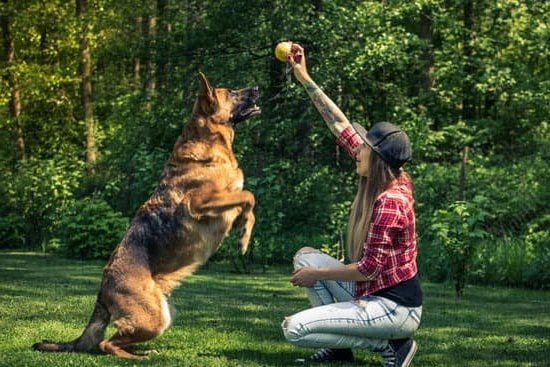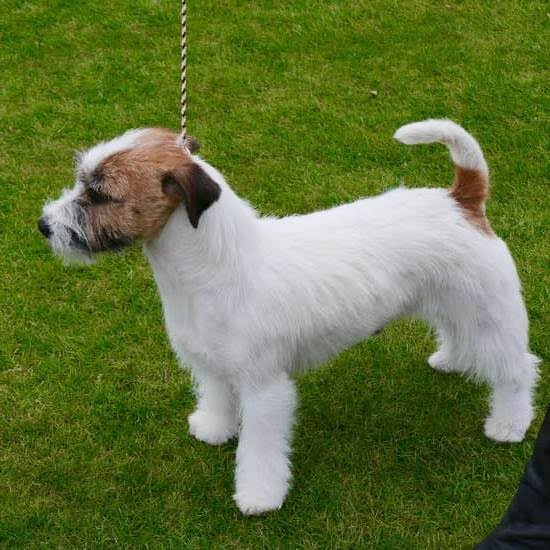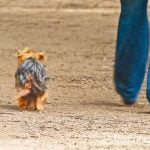Drug detection dogs play a crucial role in combating drug trafficking and preventing illegal substances from entering various environments. Their unique abilities to detect hidden narcotics make them an invaluable asset in law enforcement agencies, airports, schools, and other establishments. This article will delve into the intricacies of training drug detection dogs, starting with understanding their characteristics and the initial selection process.
It will also explore the importance of basic obedience training, teaching scent identification, reinforcement techniques for effective training, advanced scenario-based training, and the essential bond between a dog and its handler. By following best practices for ongoing maintenance and upkeep, well-trained drug detection dogs can significantly impact reducing drug trafficking and providing safer environments.
Understanding the Characteristics of a Successful Drug Detection Dog
Drug detection dogs play a vital role in law enforcement efforts to combat drug trafficking and prevent illegal substances from entering various environments. To be successful in this line of work, certain characteristics are necessary for a dog to excel as a drug detection dog.
One crucial characteristic is strong scent detection abilities. Drug detection dogs must have an exceptional sense of smell to detect even the smallest amounts of drugs concealed in various forms and substances. Dogs with a higher number of olfactory receptors are particularly well-suited for this task.
Additionally, high energy levels are essential for drug detection dogs. They often need to search large areas and maintain focus for long periods of time. Dogs with lower energy levels may become easily fatigued or lose interest in searching, hindering their effectiveness in the field.
Another important characteristic is a strong drive for rewards. Drug detection dogs rely on rewards, such as treats or toys, to reinforce their behavior when they successfully detect drugs. Dogs with a high motivation for rewards are more likely to consistently perform at a high level and remain enthusiastic about their work.
By understanding these characteristics, handlers can effectively select dogs that have the potential to excel as drug detection dogs. Identifying these traits early on ensures that the right candidates undergo the necessary training and preparation, maximizing their chances of success in combating the illegal drug trade.
Overall, possessing strong scent detection abilities, high energy levels, and a strong drive for rewards are key characteristics that contribute to the success of drug detection dogs. Recognizing these qualities during the selection process is essential for identifying canines that have the potential to excel in this crucial line of work.
Initial Training and Selection Process for Drug Detection Dogs
The initial training and selection process is a crucial step in preparing a dog for drug detection work. It is important to select dogs with the right temperament, intelligence, and physical capabilities to excel in this demanding role. Additionally, proper training methods must be employed to ensure that the dogs develop the necessary skills and behaviors required for effective drug detection.
The selection process begins with an assessment of the dog’s temperament. Dogs chosen for drug detection work need to be confident, focused, and possess a strong drive to work. They should also have a friendly disposition and be comfortable around people. Obedience testing is conducted to evaluate their level of trainability and willingness to follow commands.
Once selected, the dogs undergo initial obedience training where they learn basic commands such as sit, stay, recall, and heel. This foundation in obedience is crucial for maintaining control over the dog during searches and ensuring their safety. Crate training is also introduced at this stage to provide secure confinement during transportation or breaks.
Socialization with different environments is another critical aspect of the training process. The dogs are exposed to a variety of settings such as airports, schools, prisons, or public spaces to acclimate them to different smells, noises, and distractions they may encounter during their work. This exposure helps them become more confident and adaptable when conducting searches in real-world scenarios.
| Selection Criteria | Training Process |
|---|---|
| Dog’s temperament: confident, focused | Obedience training: sit, stay, recall |
| Dog’s drive to work: high energy levels | Crate training: providing secure confinement |
| Dog’s trainability: willingness to follow commands | Socialization with different environments |
Once the initial training and selection process is complete, the selected dogs can move on to more specialized training to become proficient drug detection dogs. This includes teaching them scent identification by introducing target odors such as marijuana, cocaine, or heroin. Through a gradual process of positive reinforcement and repetition, dogs learn to associate these target odors with rewards.
In summary, the initial training and selection process for drug detection dogs involves assessing their temperament and obedience potential, providing basic obedience training, and exposing them to various environments. This foundation prepares the dogs for more specialized training in scent identification and drug detection. By carefully selecting and properly training these remarkable canines, law enforcement agencies can effectively combat drug trafficking and create safer environments for society.
Establishing a Strong Foundation
Basic obedience training is an essential component in the training of drug detection dogs. It provides a solid foundation for their overall training and ensures that they respond reliably to commands and instructions. By establishing a strong foundation in basic obedience, drug detection dogs can effectively carry out their tasks and work alongside their handlers in various environments.
The Importance of Basic Obedience Training
Basic obedience training serves as the building blocks for all other aspects of a drug detection dog’s training. It teaches them fundamental commands such as sit, stay, recall, and heel, which are crucial for maintaining control and focus during operations. These commands allow handlers to effectively direct the dog’s behavior and movement, ensuring that they stay on task and prevent any potential dangers or distractions.
Furthermore, basic obedience training enhances the bond between the handler and the dog. Clear communication between the two is vital in drug detection work, where quick responses and precise teamwork are necessary. Consistent obedience training instills trust and strengthens the relationship between them, resulting in a more effective partnership.
Techniques for Basic Obedience Training
Proper leash handling is an essential skill that handlers must develop when conducting basic obedience training. A well-trained drug detection dog should walk beside their handler without pulling on the leash or becoming distracted by surrounding stimuli. Handlers need to learn techniques such as loose leash walking and using verbal cues to maintain control while allowing freedom of movement for the dog.
Crate training is another valuable technique used during basic obedience training. It provides dogs with a safe space where they can rest and feel secure. Introducing them to crate time gradually helps create positive associations with being confined while preventing destructive behaviors when left alone.
Overall, establishing a strong foundation in basic obedience training is crucial for drug detection dogs. This training not only sets them up for success but also establishes clear communication between them and their handlers. With these skills in place, drug detection dogs can effectively carry out their duties in various environments and contribute to the fight against drug trafficking.
Teaching Scent Identification
In the training process for drug detection dogs, one of the crucial steps is teaching them to identify and discriminate between different target odors. This section will delve into the methods used to introduce dogs to target odors and the gradual process of teaching them to recognize and respond specifically to these scents.
Before introducing dogs to actual target odors, trainers often start with scentless materials or samples that are not related to drugs. The purpose of this initial step is to teach the dog a basic skill called “scent association.” By associating a certain behavior, such as sitting or pawing, with the presence of a specific scent, the dogs learn how their actions can lead to rewards. Once they understand this concept, trainers can then move on to introducing target odors.
When introducing target odors, trainers use controlled situations where only the desired scent is present. For example, when training a dog to detect marijuana, a trainer might begin by having a small amount of marijuana hidden in a container among other containers without any scent. The dog is encouraged and rewarded for correctly identifying the container with marijuana.
As the dog becomes more proficient at identifying the target odor, distractions are gradually added. This could involve introducing other scents that may be similar or using environments where there are competing smells. The goal is to teach the dog to focus solely on the target odor and ignore any distractions.
It’s important for trainers to be patient during this process as each dog learns at its own pace. Some dogs may pick up on scent identification quickly while others may require more time and reinforcement. Consistency in training methods and positive reinforcement techniques such as treats or toys help reinforce correct responses and accelerate learning.
| Method | Description |
|---|---|
| Scent Association | Teaching dogs to associate specific behaviors with the presence of a scent, leading to rewards. |
| Controlled Introductions | Gradually introducing dogs to target odors in controlled situations free from distractions. |
| Addition of Distractions | Incorporating distractions such as similar scents or competing smells to teach the dog to focus solely on the target odor. |
Reinforcement Techniques
Positive reinforcement is a crucial aspect of training drug detection dogs. It involves the use of rewards, such as treats, toys, and praise, to reinforce desired behaviors and motivate the dogs to continue their detection work effectively. This section will delve into the importance of positive reinforcement in drug detection dog training and explore the concept of clicker training for precise timing and clarity.
One of the main reasons why positive reinforcement is highly effective in training drug detection dogs is that it creates a positive association with the target odor they are being trained to detect. When a dog successfully identifies and alerts to a target odor, they are immediately rewarded with a treat or praise.
This reinforces their understanding that detecting that particular scent will result in something pleasurable for them. Over time, this association strengthens their motivation and reinforces their eagerness to continue searching for target odors.
Clicker training is another technique commonly used in drug detection dog training. A clicker is a small handheld device that makes a distinct clicking sound when pressed. The purpose of the clicker is to mark the exact moment when the dog performs the desired behavior.
By using this clear and consistent signal, trainers can provide precise feedback to the dog, indicating that they have performed correctly before delivering the reward. Clicker training allows for more efficient communication between trainer and dog, making it easier for dogs to understand what behaviors are being reinforced.
In addition to rewards and clickers, verbal praise can also be a powerful tool in positive reinforcement training. Dogs thrive on human interaction and thrive on hearing words like “good job” or “well done.” These words along with petting or playtime acts as extra motivation for drug detection dogs during their training sessions.
Overall, by utilizing positive reinforcement techniques like treats, toys, praise, and clicker training, handlers can effectively motivate drug detection dogs during their training sessions and enhance their performance in detecting target odors accurately. The combination of rewards and clear communication helps to create a positive working relationship between the handler and the dog, ensuring that the dog remains highly focused and enthusiastic about their detection work.
Advanced Training
Once drug detection dogs have mastered the basics of scent identification and obedience training, they must undergo advanced training to ensure they are prepared for real-world scenarios. This involves proofing their skills against distractions, teaching them to search in different environments, and exposing them to various quantities and concealment methods of drugs.
One important aspect of advanced training is proofing the dog’s ability to stay focused despite distractions. Dogs may encounter numerous distractions while searching for drugs, such as loud noises, crowds, or other animals. To prepare them for these situations, trainers gradually introduce distractions during training sessions.
For example, they may play recorded sounds in the background or have someone walk by with a toy. By consistently exposing the dogs to distractions and rewarding them for maintaining focus on their task, trainers can reinforce their ability to stay on track even when surrounded by potential diversions.
Scenario-based training is another crucial component of advanced drug detection dog training. This involves simulating real-life scenarios that dogs may encounter while working. Trainers create mock environments such as airports or vehicles and plant various amounts of drug odors in hidden locations.
Dogs are then tasked with searching these areas for the specific target odor and indicating its presence to their handlers accurately. Through this type of training, drug detection dogs become familiar with the different ways drugs can be concealed and learn to effectively locate them.
To enhance realism in scenario-based training, trainers often work with experienced handlers who play the role of individuals trying to smuggle drugs past the dog team. These mock scenarios allow both the dogs and handlers to practice their skills under realistic conditions while building confidence in their abilities.
By undergoing proofing and scenario-based training, drug detection dogs develop advanced capabilities that are essential for successful drug detection operations. Their ability to stay focused amidst distractions and effectively search various environments significantly contributes to their overall effectiveness in detecting illegal substances.
Key Points
- Proofing involves introducing distractions during training to reinforce the dog’s ability to remain focused on detecting drugs.
- Scenario-based training simulates real-life situations and allows dogs to practice their skills in locating concealed drugs.
- Working with experienced handlers during scenario-based training enhances realism and builds confidence in the dog-team’s abilities.
Handler Training and Dog-Handler Bond
The Importance of Handler Training
In order for drug detection dogs to be effective in their work, it is essential that their handlers receive proper training. Handlers must understand the specific techniques and methods used in drug detection dog training in order to effectively communicate with their canine partners. Additionally, handler training helps build a strong bond between the handler and the dog, fostering trust and teamwork.
During handler training, individuals learn about the various aspects of dog behavior, scent detection, reinforcement techniques, and scenario-based training. They also study search patterns and strategies that can optimize the effectiveness of a drug detection mission. Understanding these principles allows handlers to better interpret the subtle cues and signals their dogs display during searches.
Building the Dog-Handler Bond
The relationship between a drug detection dog and its handler is crucial for successful detection. A strong bond ensures effective communication between both parties, leading to efficient searches and accurate indications from the dog. Handlers must invest time in establishing trust through consistent positive reinforcement, rewards, and praise.
Handlers are encouraged to participate actively in their drug detection dog’s training sessions. This involvement not only strengthens the bond but also enables handlers to gain valuable insights into their canine partner’s strengths, weaknesses, and individual preferences. By paying close attention to their dogs’ behaviors and body language during training exercises, handlers become adept at understanding and responding to their needs.
Ongoing Training for Dog-Handler Teams
Handler training does not end after the initial phase; ongoing education is critical for maintaining proficiency in both handling skills and knowledge of ever-evolving trends related to drug trafficking. Regular training sessions help handlers stay up-to-date with new methodologies or substances that may be encountered.
It is also important for drug detection teams to participate in realistic simulations or mock scenarios that emulate real-world situations they may encounter on the job. These simulations allow teams to practice working together under various conditions while familiarizing the dogs with different environments.
Continued education and training are vital for both handlers and dogs to ensure they function at their optimal level of efficiency. By investing in ongoing training and maintaining a strong bond, drug detection dog teams can be highly successful in their mission to combat drug trafficking and provide safer environments for all.
Best Practices for Ongoing Maintenance and Upkeep
Maintaining the training and skills of drug detection dogs is crucial to ensure their long-term effectiveness in combating drug trafficking and preventing illegal substances from entering various environments. Ongoing maintenance and upkeep practices are vital to keep these highly specialized canines at the top of their game. In this section, we will explore some best practices for maintaining and enhancing the capabilities of drug detection dogs.
Regular training sessions are essential to help drug detection dogs maintain their skills and improve their performance over time. Training sessions should be conducted consistently, using a variety of scenarios and environments to simulate real-world conditions. These sessions should focus on reinforcing scent identification, obedience commands, search techniques, and response to distractions. Regular training not only sharpens the dog’s abilities but also strengthens the bond between the handler and the dog.
Health checks are another critical aspect of maintaining drug detection dogs. Regular veterinary visits should be scheduled to ensure that the dogs are in optimal health. It is important to monitor for any signs of illness or injury that may hinder their ability to perform effectively. Providing appropriate nutrition is also vital for keeping these working dogs in peak condition. A well-balanced diet that meets nutritional requirements will contribute to their overall health, stamina, and cognitive functions.
In addition to physical exercise, mental stimulation activities should be incorporated into a drug detection dog’s routine. Mental enrichment exercises such as puzzle toys or scent games can help prevent boredom and keep their minds sharp. These activities not only provide an outlet for their energy but also reinforce their natural instincts and scent detection abilities.
To summarize, ongoing maintenance and upkeep practices play a crucial role in ensuring the continued effectiveness of drug detection dogs. Regular training sessions, health checks, proper nutrition, and mental stimulation activities all contribute to keeping these remarkable canines at peak performance levels. By implementing these best practices, handlers can maintain highly effective teams that make significant contributions in reducing drug trafficking and providing safer environments.
Conclusion
In conclusion, well-trained drug detection dogs play a crucial role in the fight against drug trafficking and the prevention of illegal substances from entering various environments. These highly skilled canines possess specific traits and qualities that make them suitable for this important task, including strong scent detection abilities, high energy levels, and a strong drive for rewards.
The training process begins with a careful selection process, assessing the dog’s temperament and obedience before moving on to basic obedience training. This establishes a strong foundation for further training, including teaching scent identification and reinforcing positive behavior through rewards such as treats and toys. Advanced training techniques prepare these dogs for real-world scenarios by proofing against distractions and exposing them to various quantities and concealment methods of drugs.
One of the key factors in the success of drug detection dogs is the bond between the dog and their handler. Effective communication, trust-building exercises, and ongoing training ensure a close partnership that leads to successful detections. Ongoing maintenance and upkeep are also vital to maintaining the effectiveness of these canines, including regular training sessions, health checks, proper nutrition, and mental stimulation activities.
Overall, well-trained drug detection dogs have a significant impact on reducing drug trafficking, providing safer environments, and showcasing the dedication required to train these remarkable canines. Their unique abilities continue to be an invaluable asset in combatting illegal drug activities worldwide.
Frequently Asked Questions
Can you train your dog to be a drug dog?
Yes, it is possible to train a dog to be a drug dog. However, not all dogs are suited for this particular role. Dogs that are chosen for drug detection training usually possess certain characteristics such as a strong sense of smell, intelligence, high energy levels, and an eagerness to work.
The training process typically involves teaching the dog to recognize and indicate the presence of specific odors associated with drugs. This requires consistent and focused training methods under the guidance of experienced handlers or trainers who understand the intricacies involved.
How long does it take to train a detection dog?
The length of time it takes to train a detection dog can vary depending on several factors. These include the dog’s breed, age, temperament, prior training history, and the specific type of detection training being undertaken. On average, however, it can take several months to over a year to fully train a detection dog to achieve reliable and accurate results.
Training is progressive and often requires incremental steps where dogs master basic obedience before being introduced to scent recognition techniques and more complex scenarios. Regular reinforcement and maintenance sessions are also important throughout the dog’s working life.
Can my dog become a detection dog?
It is possible for your dog to become a detection dog; however, not all dogs are suitable for this line of work. Dogs selected for detection training undergo various assessments to determine their suitability based on their natural abilities and traits required for the particular detection task at hand (e.g., drugs or explosives).
Factors such as breed, temperament, drive, stability, health, socialization skills, previous training experiences play critical roles in evaluating whether your dog has the potential to succeed as a detection dog. If your dog possesses these qualities and demonstrates an aptitude for scent work, then they may have the potential for this specialized training with proper guidance from experienced trainers or professionals in the field.

Welcome to the blog! I am a professional dog trainer and have been working with dogs for many years. In this blog, I will be discussing various topics related to dog training, including tips, tricks, and advice. I hope you find this information helpful and informative. Thanks for reading!





